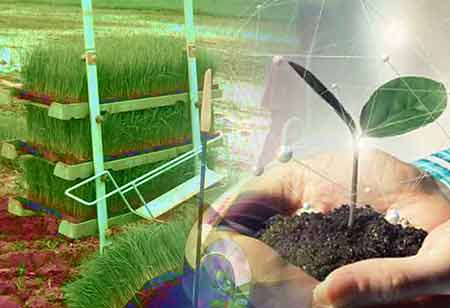Thank you for Subscribing to Agri Business Review Weekly Brief
The Potential For Artificial Intelligence In Agriculture
Put more plainly, as the system gets an increasing amount of similar sets of data that can be

By
Agri Business Review | Saturday, May 28, 2022
Stay ahead of the industry with exclusive feature stories on the top companies, expert insights and the latest news delivered straight to your inbox. Subscribe today.
By using artificial intelligence and machine learning, machines can learn to solve any problem on earth relating to the physical interaction of all things within a defined or contained environment.
Fremont, CA: The precept of artificial intelligence is one where a machine can understand its environment and, through a specific capacity of flexible rationality, take a move to address a specified target related to that environment. Machine learning is when this same machine, per a specified set of protocols, improves its ability to address problems and objectives related to the environment as the statistical nature of the data it receives increases.
Put more plainly, as the system gets an increasing amount of similar sets of data that can be categorized into specified protocols, its ability to rationalize increases, allowing it to better "predict" a range of outcomes.
The climb of digital agriculture and its associated technologies has unlocked a wealth of new data opportunities.
The climb of digital agriculture and its related technologies has unlocked a wealth of new data opportunities. Remote sensors, satellites, and UAVs can collect information 24 hours daily over a complete field. These can monitor plant health, temperature, soil condition, humidity, etc. The quantity of data these sensors can generate is overwhelming, and the numbers' significance is hidden in that data's avalanche.
The idea is to allow farmers to better understand the situation on the ground through advanced technology (such as remote sensing) that can tell them more about their situation than they can see with the naked eye. And not just more precisely but also more rapidly than seeing it walking or driving through the fields.
Remote sensors allow algorithms to interpret a field's environment as statistical data that can be understood and beneficial to farmers' decision-making. Algorithms process the data, adapting and learning according to the data received. The more inputs and statistical information gathered, the better the algorithm will predict various outcomes. And the purpose is that farmers can utilize this artificial intelligence to achieve their goal of a better harvest by making better decisions in the field.
Agriculture is one of the most challenging fields to contain for statistical quantification. Even within a single field, conditions change from one section to the next. There's uncertain weather, changes in soil quality, and the ever-present possibility that pests and diseases may pay a visit. Growers may feel their prospects are suitable for an upcoming harvest, but until that day arrives, the outcome will always be uncertain.
There is enormous potential for AI and ML to revolutionize agriculture by integrating these technologies into crucial markets on a global scale. More effort, skills, and funding are needed to test these technologies in farmers' fields for technology to impact the area truly. Only then can it distinguish the grower, where it counts.





